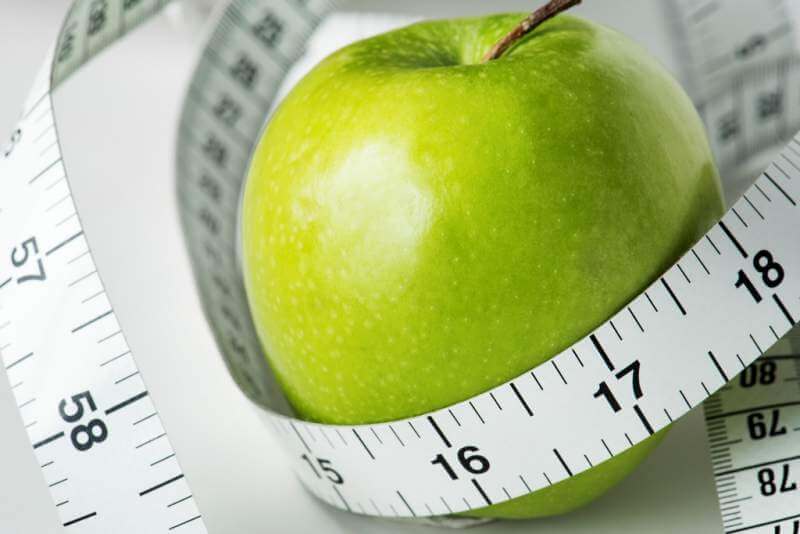Millions of people around the world have a body weight that they never wanted to have in the first place. In fact, there are people who are constantly adding pounds to their existing weight with each passing year, wondering how differently they could have invested in their weight loss efforts.
According to a report published by ABC News, the number of dieters in the United States (US) alone crossed the 100 billion mark in 2012. The total annual revenue of the weight loss industry in the US, on the other hand, had already crossed the $20 billion mark by then. This includes the amount of money that an average individual spends on diet drugs, books, and bariatric surgeries such as sleeve gastrectomy and gastric bypass.
No matter how comfortable or struggling our life is, each one of us lusts for a body that is appreciated for its looks and perfect statistics. To fulfil our ultimate desire, we invest millions of dollars into the ever-growing weight loss industry and try everything that is made available to us as an option – a certified nutritionist who furnishes an ideal diet plan, so-called diet regimens such as Atkins and Paleo diet, strenuous gym schedule, nutritional supplements, and in some cases, weight-loss surgery.

Weight loss surgery and cosmetic procedures such as liposuction and tummy tuck have gained quite a huge popularity in the last few years. The latter is a more invasive method of weight loss, often recommended to people with morbid obesity. However, life after bariatric surgery changes drastically for people who choose to go the surgical way and it sometimes may even lead to an uneventful situation.
Despite the variety of weight loss aids made available today, there is no guarantee that they would be as effective as you would want them to be. With failed weight loss efforts come constant nagging, decreased motivation and in some case, extreme depression. To avoid the repercussions of failed weight loss efforts, it is important to understand what actually constitutes weight.
Fat Loss versus Muscle Loss: The Saga of Weight Loss
 People who indulge in crash dieting for quick weight loss often succeed at it. Crash dieting involves keeping yourself away from food you love to eat and minimizing your intake of calories, even the ones that you need to make your body function optimally every day.
People who indulge in crash dieting for quick weight loss often succeed at it. Crash dieting involves keeping yourself away from food you love to eat and minimizing your intake of calories, even the ones that you need to make your body function optimally every day.
The weight loss associated with crash dieting is huge, primarily because it often aids in losing muscles instead of body fat. Our body is primarily made up of muscles and fat, wherein fatty tissues are less denser than muscles. That is, one gram of fatty tissue occupies much more space than one gram of muscles.
Crash dieting restricts the intake of essential nutrients that the body needs to perform everyday functions. As a result, the body goes into a state of deprivation. As as a counter attack, it prevents the breakdown of fats so that it can be used at a later stage to meet the body’s energy requirements and starts breaking down muscles instead for energy to meet the nutrient deficit.
The breakdown of muscles in the body leads to weight loss, which is reflected in numbers on the weighing scale. Weight loss achieved through crash dieting never goes a long way as the body tries to compensate the loss of nutrients at a much higher rate following crash dieting, and hence gain greater weight than what you actually lost at the first place.
This important takeaway here is that people should target to lose fats instead of muscles by taking a holistic approach to weight loss than just fall for one or the other weight loss fads.
Weight Loss versus Inch Loss: Which is Reliable?
 Inch loss is the actual measure of how much fat you’ve lost around your waist, abdomen, thighs, biceps, and other parts of the body. On the other hand, the changed numbers on a weighing scale may or may not depict how much fat you’ve actually lost, in addition to the muscle weight.
Inch loss is the actual measure of how much fat you’ve lost around your waist, abdomen, thighs, biceps, and other parts of the body. On the other hand, the changed numbers on a weighing scale may or may not depict how much fat you’ve actually lost, in addition to the muscle weight.
Therefore, changes in a weight should always be calculated in inches and not on a weighing scale. It is possible for a person to achieve a sleek and a toned body without losing weight, and that is because the body has gained lean muscle weight but lost fat from where you wanted it to go away. Therefore, if you’re losing inches but not losing weight, then you are probably on the right track.
5 Healthiest Ways to Lose Weight
 While weight loss fads may not go a long way when it comes to actually achieving a sleek, toned, and a healthy body, the following tips can actually do wonders by:
While weight loss fads may not go a long way when it comes to actually achieving a sleek, toned, and a healthy body, the following tips can actually do wonders by:
- Losing fat around that targeted areas
- Boosting energy levels throughout the day
- Increasing stamina and vitality
- Improving concentration
- Suppressing frequent hunger pangs
- Increasing the intake of water
Take a note of the following tips and try to include them in your daily routine to carve a way for healthy weight loss:
Start your day with a glass of plain water
 It may be difficult for some of you to drink lukewarm water empty stomach first thing in the morning. Such people can try taking a sip of two of water for the initial few days and gradually increase their intake. You will see how your stomach will get used to it and automatically start demanding water internally from you as soon as you wake up.
It may be difficult for some of you to drink lukewarm water empty stomach first thing in the morning. Such people can try taking a sip of two of water for the initial few days and gradually increase their intake. You will see how your stomach will get used to it and automatically start demanding water internally from you as soon as you wake up.
Drinking a glass of lukewarm water on an empty stomach improves metabolism. Additionally, it also helps flush out toxins from the body that may have accumulated overnight as a result of the repair work. It hydrates you, provides fuels of the brain, and also triggers the production of new red blood cells and muscle cells.
Stop drinking tea and coffee on an empty stomach
 Tea and coffee are well-known stimulants that puts the body under fight-or-flight mode by stimulating the production of the stress hormone cortisol. Putting your body in the active mode to fight stressful conditions for the rest of the day is not a great way to start the day. Regular consumption of such stimulants on an empty stomach every morning for months may trigger a number of problems such as bloating, bad oral health, dehydration, and lower metabolism rate, which can actually prevent fat burn.
Tea and coffee are well-known stimulants that puts the body under fight-or-flight mode by stimulating the production of the stress hormone cortisol. Putting your body in the active mode to fight stressful conditions for the rest of the day is not a great way to start the day. Regular consumption of such stimulants on an empty stomach every morning for months may trigger a number of problems such as bloating, bad oral health, dehydration, and lower metabolism rate, which can actually prevent fat burn.
Instead, you should consume a seasonal fruit or a handful of nuts (first meal) after 10 minutes of having a glass of water on an empty stomach. For people who just cannot quit drinking tea or coffee in the morning, you can have your daily cup of tea or coffee with breakfast, which you should ideally take after 30 to 60 minutes of having your first meal in the morning.
Practice portion control
 Weight loss, or rather fat loss, is only a distant possibility for people who stick to their routine of having three, heavy meals in a day. If you really want to see yourself losing stubborn fat around your waist and thighs for a long-term, then break your three meals into seven smaller and wholesome meals that you consume every three hours.
Weight loss, or rather fat loss, is only a distant possibility for people who stick to their routine of having three, heavy meals in a day. If you really want to see yourself losing stubborn fat around your waist and thighs for a long-term, then break your three meals into seven smaller and wholesome meals that you consume every three hours.
It is not necessary and not practically possible to have fresh food prepared for every meal but this is not what you are meant to do either. A handful of nuts, a peanut butter or a vegetable sandwich, a handful of peanuts, or a bowl of oats topped with fresh fruits also count as a meal.
Move around, whenever possible
 Sedentary lifestyle is one of the greatest and an independent risk factor for obesity and a number health conditions such as hypertension, diabetes, and heart disease. For sustainable weight loss, it is important for you to move around as frequently as possible. People who are into sedentary jobs should stand up for at least two to three minutes after 30 minutes of constant sitting.
Sedentary lifestyle is one of the greatest and an independent risk factor for obesity and a number health conditions such as hypertension, diabetes, and heart disease. For sustainable weight loss, it is important for you to move around as frequently as possible. People who are into sedentary jobs should stand up for at least two to three minutes after 30 minutes of constant sitting.
Some of the other ways by which you can introduce movement into your lives is by climbing stairs whenever possible, walking up to the grocery store to purchase fresh vegetables and milk, doing household chores such as dished, mopping, and laundry at least once or twice a week.
Eat in Silence
 It is hardly possible to make today’s tech-savvy generation stay away from gadgets at any time of the day – by it during breakfast, at a meeting, or a family get together. People who consume their meals while looking at their televisions, smartphone, or laptop screens often end up eating more than they actually needed to. This is because their whole focus in on their screens and not on what they are eating, how much they are eating, and how does it taste like.
It is hardly possible to make today’s tech-savvy generation stay away from gadgets at any time of the day – by it during breakfast, at a meeting, or a family get together. People who consume their meals while looking at their televisions, smartphone, or laptop screens often end up eating more than they actually needed to. This is because their whole focus in on their screens and not on what they are eating, how much they are eating, and how does it taste like.
Under such circumstances, people to listen to when their stomach is actually telling them to stop. Eating in silence is a way to listen to the satiety signals coming all the way from the stomach. Eating in silence lets your stomach connect to the brain, which is solely focusing on the food that you are eating. For optimum weight loss, it is important to let your stomach and brain communicate in silence and enjoy every bit of food that you are consuming and not merely putting down the throat.
Author Bio
Guneet Bhatia is a freelance medical writing professional and has catered to the requirements of more than a dozen clients located across the globe. She is an aspiring novelist who intends to live a nomadic life with a vision empathetically touch as many lives as a person can during his or her lifetime. She has a vested interest in breaking the health myths that people often surround themselves with.
LinkedIn: https://www.linkedin.com/in/guneet-bhatia-090b6430/
WordPress: https://healthosaurus.wordpress.com/

 Guneet Bhatia is a freelance medical writing professional and has catered to the requirements of more than a dozen clients located across the globe. She is an aspiring novelist who intends to live a nomadic life with a vision empathetically touch as many lives as a person can during his or her lifetime. She has a vested interest in breaking the health myths that people often surround themselves with.
Guneet Bhatia is a freelance medical writing professional and has catered to the requirements of more than a dozen clients located across the globe. She is an aspiring novelist who intends to live a nomadic life with a vision empathetically touch as many lives as a person can during his or her lifetime. She has a vested interest in breaking the health myths that people often surround themselves with.